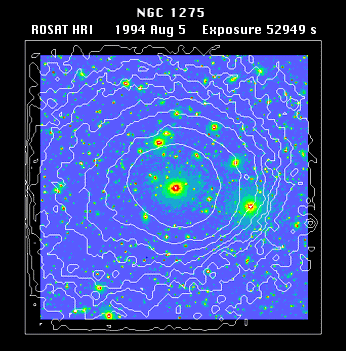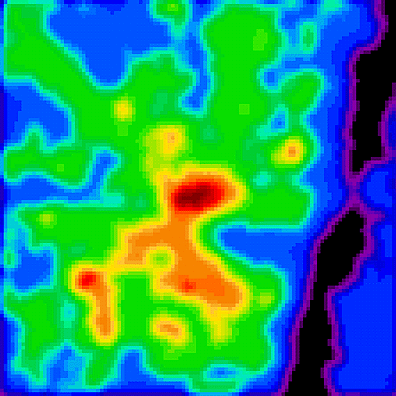Imagine the Universe! News Desk
A New Dark Matter Discovery...and Some New Puzzles as Well
| 23 July 1997 |
X-ray observations by of the celestial object MG2026+112 have given scientists a new puzzle to solve....and great clues to help them do it! MG2026+112 is a gravitationally lensed quasar with a redshift of 3.27. Such a high redshift means that the object was formed early in the history of the Universe. Gravitational lensing is an effect, according to Einstein's Theory of Theory of Relativity, due to the bending of light by massive objects. Normally, light emitted by a source travels in a straight line. If it encounters a nearby massive object, the path is bent a little away from a straight line. The amount of bending is directly related to the mass of the nearby object. The separation of the lensed images of MG2026+112 is such that only a cluster of galaxies (with a mass many times that of a single galaxy) is likely to be responsible for the lensing. However, despite deep optical and IR searches, only a single galaxy had been discovered -- not a cluster. This lone galaxy, at a redshift of 1.01, is thought to possess nowhere near enough mass to be the lensing object all by itself.
Clusters of galaxies were originally found by optically searching for large numbers of galaxies in a small patch of sky. However, we now know that clusters are very bright X-ray sources. The observed X-rays are primarily emitted by the hot gas between the galaxies in the cluster, rather than by the individual stars within the galaxies. This hot gas contains most of the "visible" matter as well (see Figure 1 for an example). The presence of heavy elements such as silicon and iron in this gas (detectable through their emission lines in the X-rays) indicates that it has been previously "nuclear-processed" by stars. In other words, it is the product of massive stars which have already lived their lives and undergone a supernova explosions which expelled the gas out of their mother galaxies. This being the case, one would expect that less massive stars which formed around the same time as these massive stars should still be in existence (less massive stars live much longer than massive ones). A close connection between the total amount of starlight and the total amount of heavy elements in a cluster of galaxies should thus exist. At least...this is what scientists expect to observe from such as system.
 |
| Figure 1. An overlay of a false-color optical image and the X-ray intensity contours of a typical cluster, Abell 426. The presence of many galaxies and the extended nature of the X-ray emission can be seen. |
Hattori et al. (a Japanese-German team of astrophysicists) report in the 1997 July 10th issue of the journal Nature, that they have detected a cluster of galaxies near the position of MG2026+112 using ASCA (see Figure 2) and ROSAT X-ray data. The ASCA spectrum shows an emission line of iron, indicating a redshift of ~1 and the presence of heavy elements, and the X-ray data show that the cluster is very similar to lower-redshift clusters, having similar size, luminosity, temperature and iron abundance. The derived mass is approximately what is required to lens the images of MG2026+112.
 |
| Figure 2. A false-color, smoothed ASCA image of the MG2026+112 region. The dark band to the right of the image is due to the gaps between CCD chips. The X-ray emission appears somewhat extended, beyond the point spread function of the ASCA telescope. |
The implied mass to light ratio of the cluster is ~3000 (in solar units), i.e. a 'dark cluster'. Where are the member galaxies of this cluster? Even a normal cluster of galaxies contains ~10 times more mass in X-ray emitting gas than in the stars, and ~5 times more mass in the dark matter than in the gas; still, a mass to light ratio of 3000 for the dark cluster is much more extreme than for normal clusters. Is this a new type of object, or are galaxies hiding just below the detection limits of previous searches? Moreover, the fact that the cluster gas is enriched in iron at such an early epoch requires that there once were massive stars that created the heavy elements, yet there is no evidence of somewhat less massive stars that should have formed at the same epoch.
This dark cluster is sure to attract the attention of researchers!

